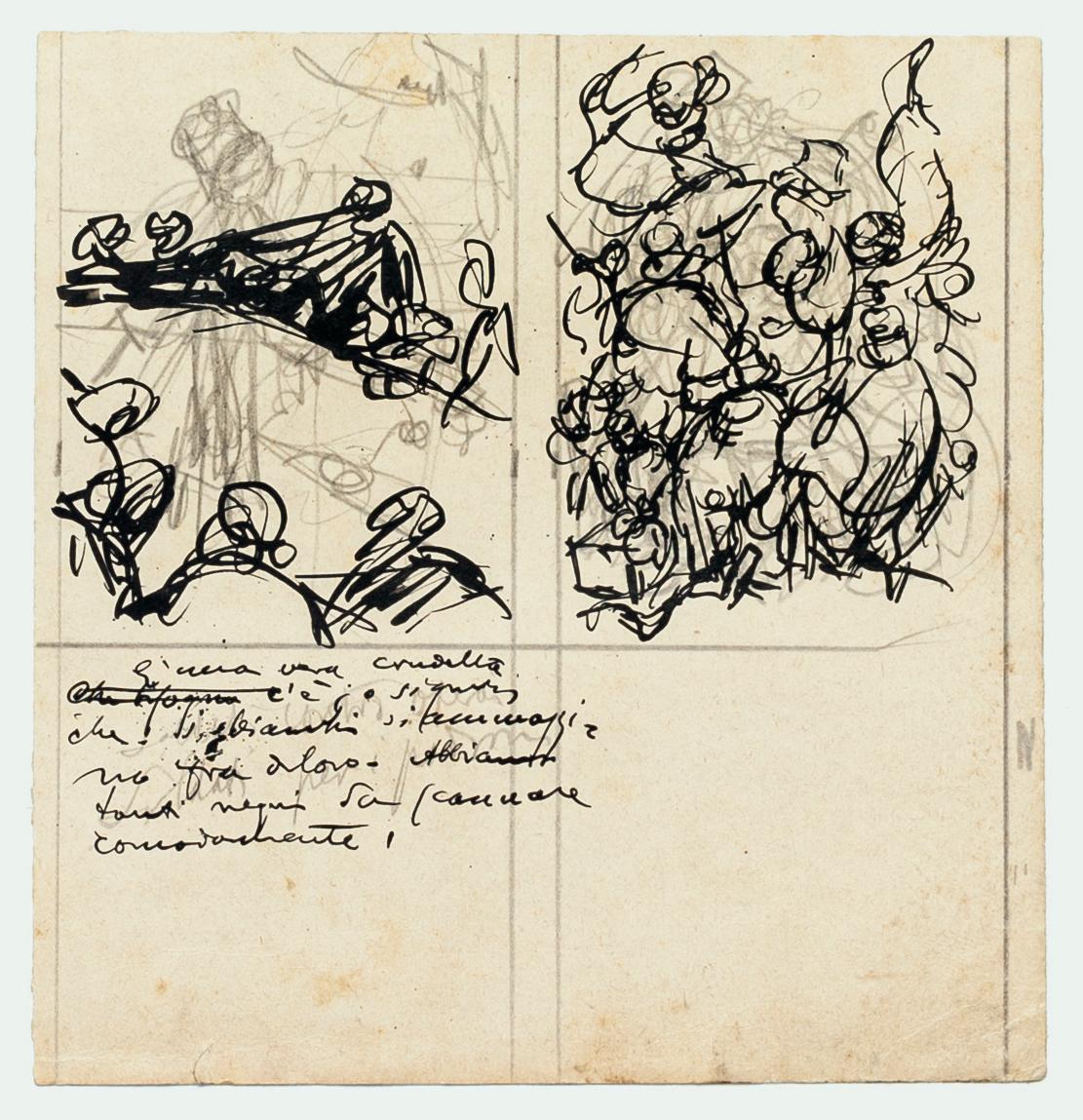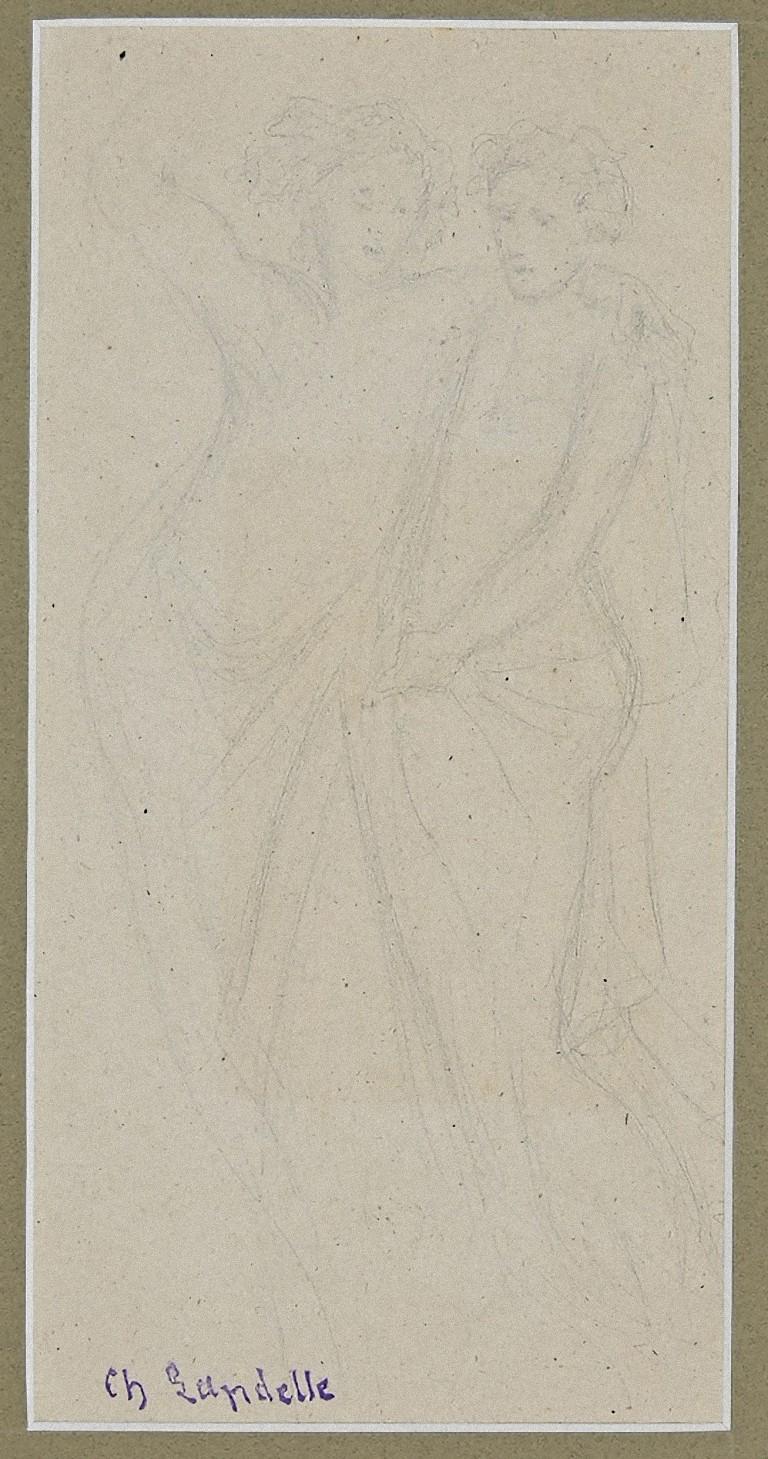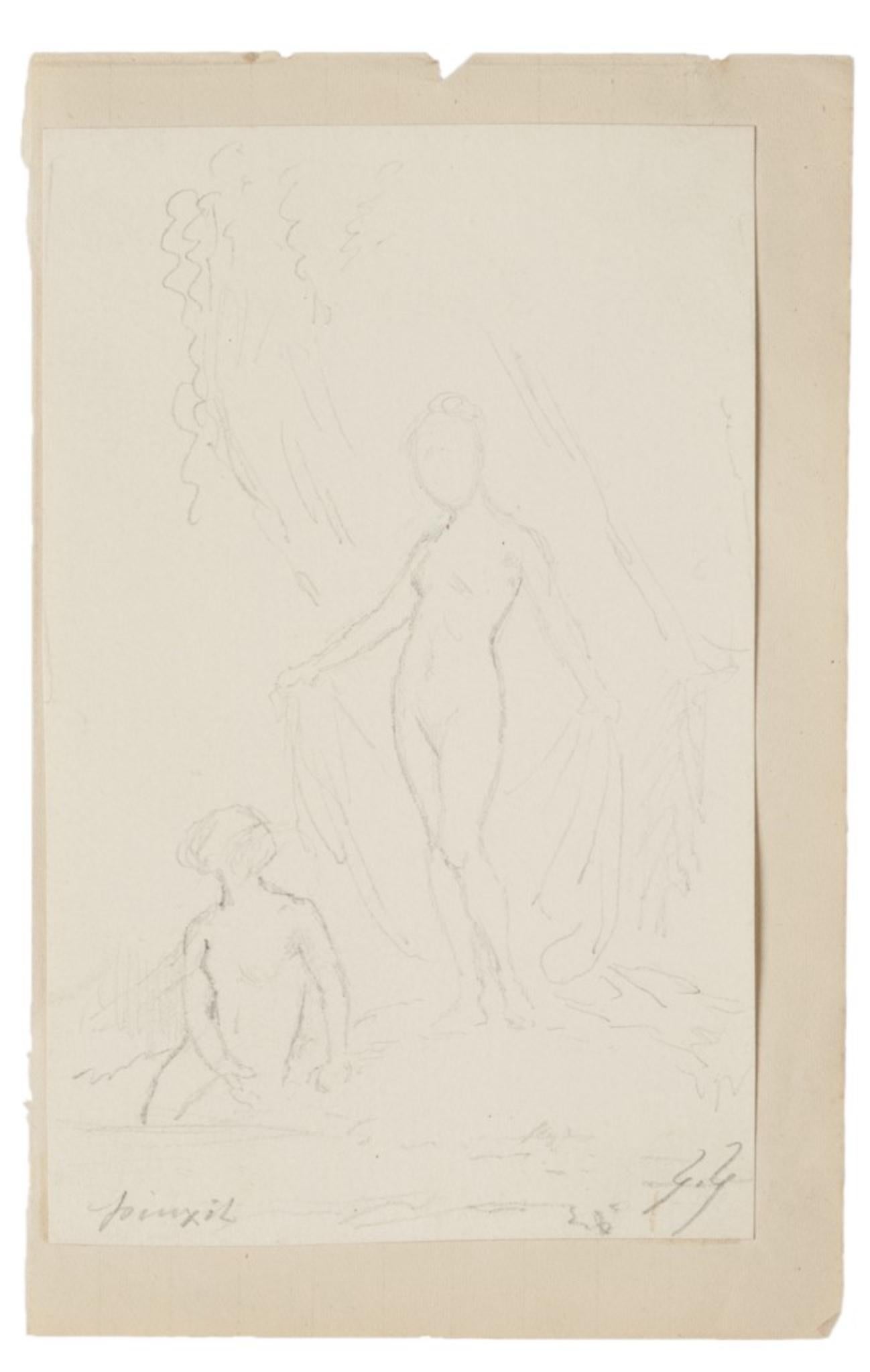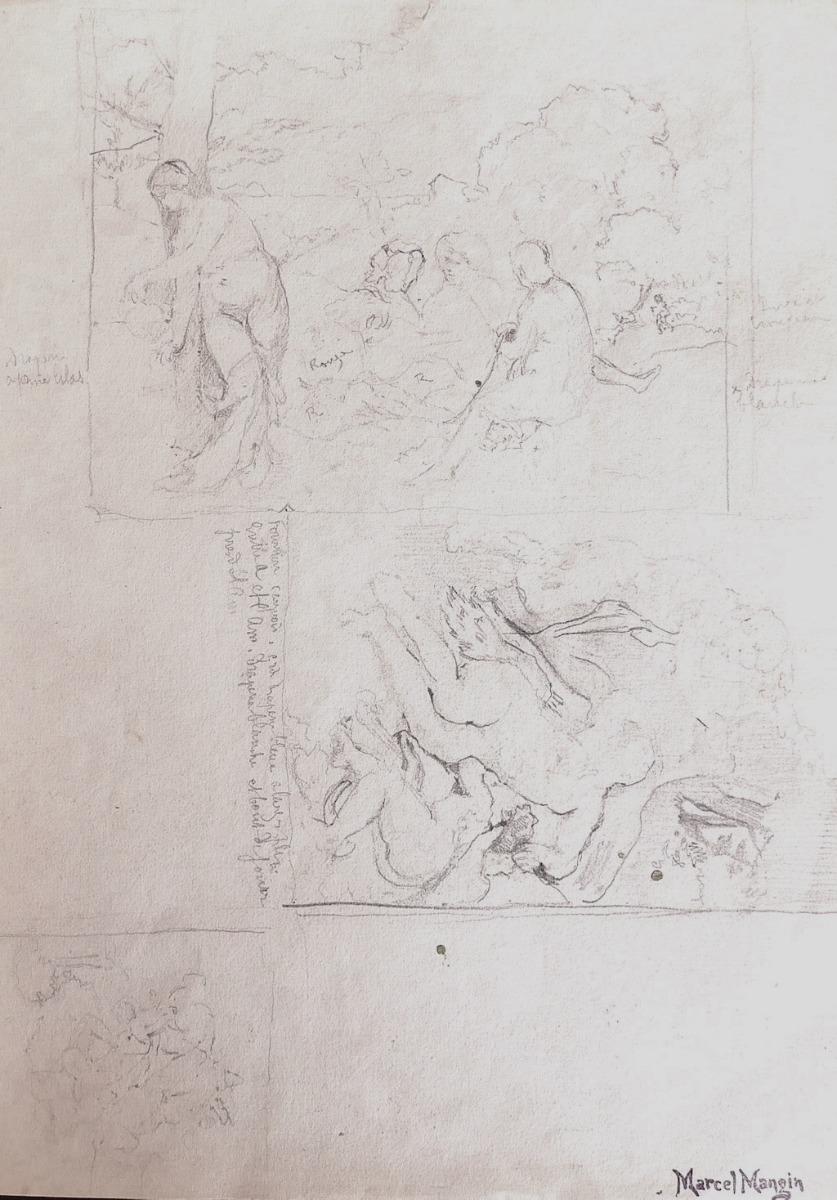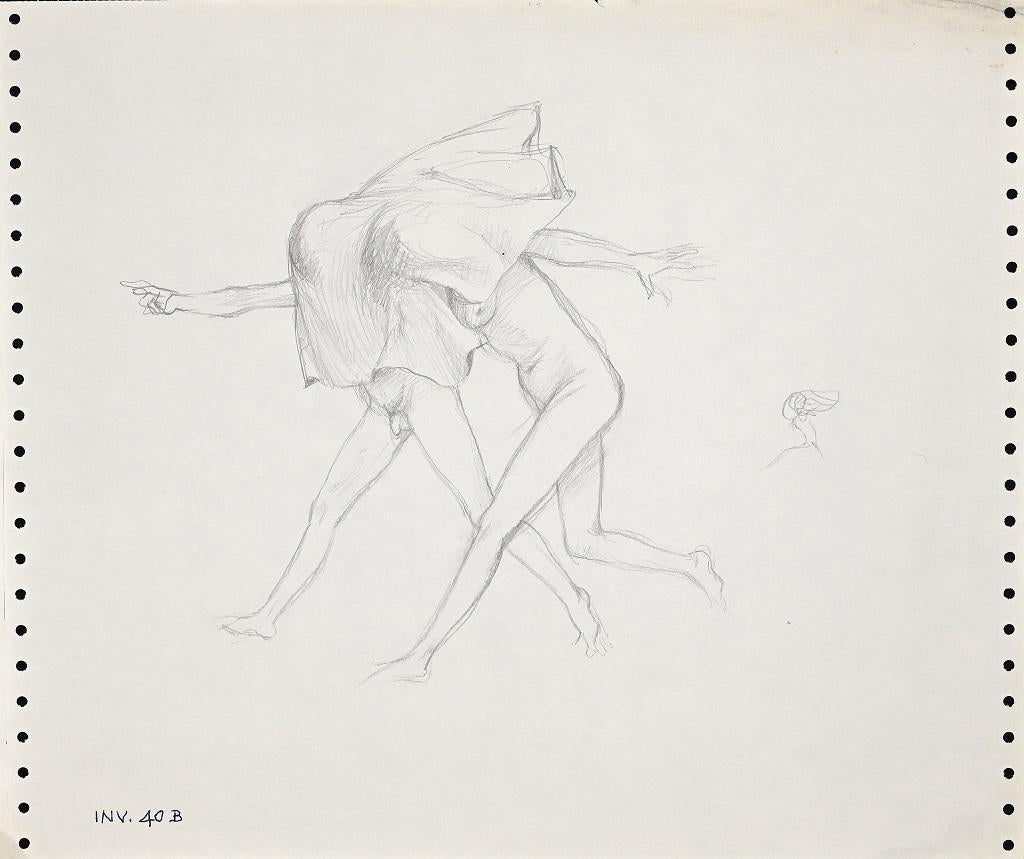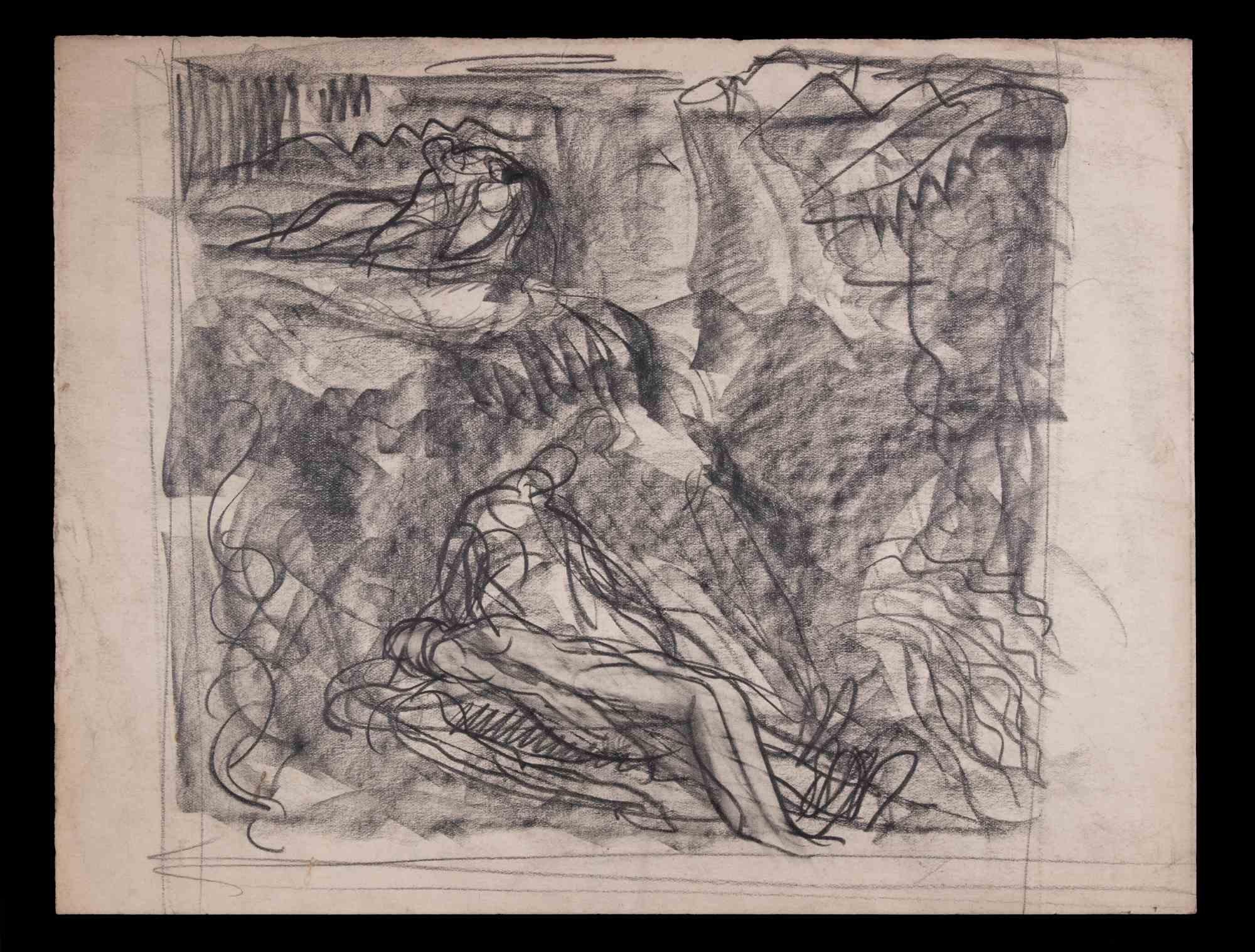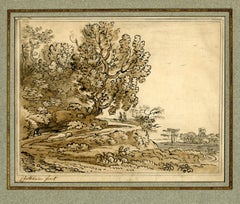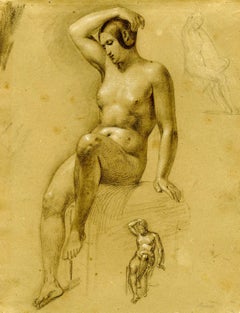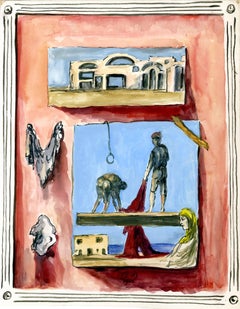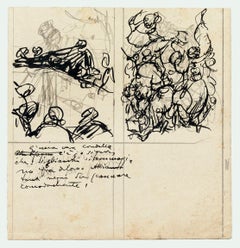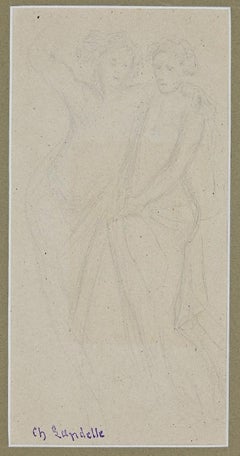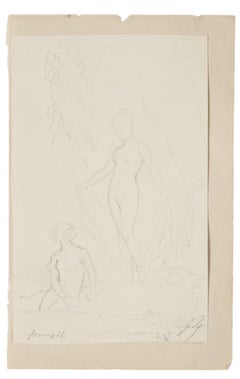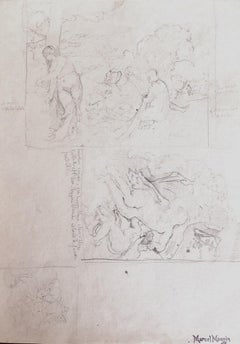Items Similar to Veillee Sepulchrale; Verso: Study of two figures in a landscape
Want more images or videos?
Request additional images or videos from the seller
1 of 7
Eugene BermanVeillee Sepulchrale; Verso: Study of two figures in a landscape1944
1944
$1,200
£916.03
€1,053.04
CA$1,688.61
A$1,877.81
CHF 986.27
MX$22,958.10
NOK 12,289.82
SEK 11,585.98
DKK 7,859.08
About the Item
Veillee Sepulchrale
Verso: Study of two figures in a landscape
Pen and ink on rose colored Canson watermark paper, 1944
Signed in ink with the artist's initials lower center (see photo)
Dated 1944 lower center;
Titled in ink upper left corner (see photo)
Provenance:
Swann Galleries, 2010, realized $900.
John Popplestone (1928-2013), Akron, OH collector, noted psychologist and author
Berman brothers (painters)
From Wikipedia, the free encyclopedia
Jump to navigationJump to search
This article is about the painters. For the American songwriters/producers, see Berman Brothers (producers).
Eugene Berman in Italy in the 1960s
Eugène Berman (Russian: Евгений Густавович Берман; 4 November 1899, Saint Petersburg, Russia – 14 December 1972, Rome) and his brother Leonid Berman (1896 – 1976[1]) were Russian Neo-romantic painters and theater and opera designers.
Contents
1 Early years
2 Later years and death
2.1 Works
3 Legacy
4 See also
5 References
Early years
Born in Russia, the Bermans fled the Russian revolution in 1918. In Paris the Bermans exhibited at the Galerie Pierre where their work earned them the name "Neo-Romantics" for its melancholy and introspective qualities, having taken inspiration from the Blue Period paintings of Pablo Picasso. Other Neo-Romantic painters were Christian Bérard, Pavel Tchelitchev, Kristians Tonny and, later in America, their friend Muriel Streeter (wife of their art dealer Julien Levy).
Eugène's work was characterized by lonely landscapes featuring sculptural and architectural elements, often ruins, rendered in a neo-classical manner,[2] whereas that of Leonid depicted beaches with fisherman's boats and nets in many parts of the world. In 1935 Eugène left for New York where he exhibited frequently at the Julien Levy Gallery (as did Leonid after the war). Later, in the 1940s, Eugène settled in Los Angeles and married the actress Ona Munson,[2] while Leonid remained in New York and married the harpsichordist Sylvia Marlowe. In 1950 he exhibited at Instituto de Arte Moderno, Buenos Aires. In 1950, Berman was elected into the National Academy of Design as an Associate member, and became a full member in 1954.
Later years and death
In America, Eugène became well known as a stage designer for ballet and opera. Following the suicide of his wife in 1955, he moved to Rome where Princess Doria-Pamphilj provided an apartment and studio for him in a wing of her palazzo on the via del Corso. In 1957 he was working with Sylvia Guirey on a new production for the Metropolitan Opera of Don Giovanni.[3] Berman continued to paint in Italy until his death in 1972.[2] Leonid died in New York in 1976.
Works
Ballet Imperial by George Balanchine, Sadler's Wells Ballet, London (1950).
Legacy
Eugene Berman's work can be found in a number of institutions, including:
McNay Art Museum[4]
Museum of Modern Art[5]
Art Institute of Chicago[6]
Hirshhorn Museum and Sculpture Garden[7]
- Creator:Eugene Berman (1899 - 1972, Russian)
- Creation Year:1944
- Dimensions:Height: 12.25 in (31.12 cm)Width: 9.38 in (23.83 cm)
- Medium:
- Movement & Style:
- Period:
- Condition:Staining recto from previous glue used in mounting.
- Gallery Location:Fairlawn, OH
- Reference Number:Seller: FA96461stDibs: LU14015623282
About the Seller
5.0
Recognized Seller
These prestigious sellers are industry leaders and represent the highest echelon for item quality and design.
Platinum Seller
Premium sellers with a 4.7+ rating and 24-hour response times
Established in 1978
1stDibs seller since 2013
809 sales on 1stDibs
Typical response time: <1 hour
Associations
International Fine Print Dealers Association
- ShippingRetrieving quote...Shipping from: Fairlawn, OH
- Return Policy
Authenticity Guarantee
In the unlikely event there’s an issue with an item’s authenticity, contact us within 1 year for a full refund. DetailsMoney-Back Guarantee
If your item is not as described, is damaged in transit, or does not arrive, contact us within 7 days for a full refund. Details24-Hour Cancellation
You have a 24-hour grace period in which to reconsider your purchase, with no questions asked.Vetted Professional Sellers
Our world-class sellers must adhere to strict standards for service and quality, maintaining the integrity of our listings.Price-Match Guarantee
If you find that a seller listed the same item for a lower price elsewhere, we’ll match it.Trusted Global Delivery
Our best-in-class carrier network provides specialized shipping options worldwide, including custom delivery.More From This Seller
View AllLandscape with Figures in the English Countryside
Located in Fairlawn, OH
Landscape with Figures in the English Countryside
Pen, ink and graphite with gray and brown washes on laid watermarked paper, c. 1740
Signed by the artist lower left of image: "Chate...
Category
1740s Romantic Landscape Drawings and Watercolors
Materials
Ink
Untitled
Located in Fairlawn, OH
Bömmels belonged to the co-founders of the Cologne artist group Mülheimer Freiheit , which also included Hans Peter Adamski , Walter Dahn , Jiří Georg Dokoupil , Gerard Kever and Ger...
Category
1980s Surrealist Figurative Drawings and Watercolors
Materials
Graphite
Study of a Seated Woman and Two Smaller Studies of the Same
By Henirich Schwemminger
Located in Fairlawn, OH
Study of a Seated Woman and Two Smaller Studies of the Same
Unsigned
Annotated: "Roma" (Rome)
Black chalk heightened with white chalk on buff wove paper
Sheet size: 11 x 8 1/2 inche...
Category
19th Century Academic Nude Drawings and Watercolors
Materials
Chalk
Trompe-l'Oeil Study
By Eugene Berman
Located in Fairlawn, OH
Trompe-l'Oeil Study
Watercolor on heavy wove paper, 1943
Signed with the artists initials, lower center of image; Dated 1943, lower center of image
Provenance:
Swann Galleries, 2007, realized $2,640
Condition: Excellent. Fresh colors. Framed with conservation glass.
Sheet: 14 3/4 x 11 1/4"
Frame size: 20 3/4 x 17
Berman brothers (painters)
From Wikipedia, the free encyclopedia
Eugene Berman in Italy in the 1960s
Eugène Berman (Russian: Евгений Густавович Берман; 4 November 1899, Saint Petersburg, Russia – 14 December 1972, Rome) and his brother Leonid Berman...
Category
1930s Surrealist Still-life Drawings and Watercolors
Materials
Watercolor
untitled (Exotic Bird in Fantastic Landscape)
By August F. Biehle
Located in Fairlawn, OH
untitled (Painting of Exotic Birds in Fantastic Landscape leaning against a wall))
Graphite on paper
Signed by the artist in pencil lower right
Pr...
Category
1960s American Modern Animal Drawings and Watercolors
Materials
Graphite
Preliminary Study for a Sculpture Project
By Boris Lovet-Lorski
Located in Fairlawn, OH
Preliminary Study for a Sculpture Project
Graphite, charcoal and wash on tracing paper, c. 1930-1940
Signed upper left and lower left (see both photos)
Created while the artist was l...
Category
1930s American Modern Figurative Drawings and Watercolors
Materials
Charcoal
You May Also Like
Figures - Ink and Pencil Drawing by G. Galantara - Early 20th Century
By Gabriele Galantara
Located in Roma, IT
Figures is an original drawing in pencil and pen realized by Gabriele Galantara, the state of preservation of the artwork is good and aged, with hand-writing of the artist on it, app...
Category
Early 20th Century Figurative Drawings and Watercolors
Materials
Ink, Pencil
Two Figures - Original Pencil on Paper by Charles Landelle - Early 20th Century
By Charles Zacharie Landelle
Located in Roma, IT
Two Figures is a pencil drawing on brown paper by Charles Landelle (1812-1908).
The state of preservation is very good. The sheet is mounted on a car...
Category
Early 20th Century Figurative Drawings and Watercolors
Materials
Pencil
Figures - Original Drawing - 20th Century
By Gabriel Guèrin
Located in Roma, IT
"Figures" is an original drawing in tempera on paper, realized by Gabriel Guèrin.
The state of preservation of the artwork is very good.
Sheet dimension: 14.5 x 9.4 cm.
Image Dimen...
Category
20th Century Modern Figurative Drawings and Watercolors
Materials
Charcoal, Pencil
Figures - Drawing on Paper by Marcel Mangin - Early 20th Century
By Marcel Mangin 1
Located in Roma, IT
Figures is an original drawing in pencil on paper by Marcel Mangin.
In good conditions: except for some foldings.
Stamped on the lower right "Marcel Ma...
Category
Early 20th Century Modern Figurative Drawings and Watercolors
Materials
Paper, Pencil
Two Figures - Drawing - 1970s
By Leo Guida
Located in Roma, IT
Two Figures is an original Contemporary artwork realized by the italian artist Leo Guida in the 1970s.
Original Drawing on paper.
The work is in very good conditions.
Category
1970s Contemporary Figurative Drawings and Watercolors
Materials
Paper, Pencil
Composition - Original Drawing by Madeleine Scali - Late 20th Century
By Madeleine Scali
Located in Roma, IT
Composition is an original pencil drawing realized by Madeleine Scali.
The artwork is in very good condition.
No signature.
Madeleine Scali (1911-2000) was a French artist.
Category
Late 20th Century Modern Figurative Drawings and Watercolors
Materials
Pencil
More Ways To Browse
Architectural Drawing Study
Italian Architectural Drawings
Dior Photo Frame
Blue Pen And Ink
Dior Ballet
In The Manner Of Picasso
John Opera
Chicago Picasso Sculpture
Christian Dior New York
Boat Italy Drawing
Julien Levy
George Balanchine
Christian Dior 1940
Neo Classical Painting Landscape
Christian Dior 1954
Don Giovanni
Berard Christian
Christian Dior 1949
